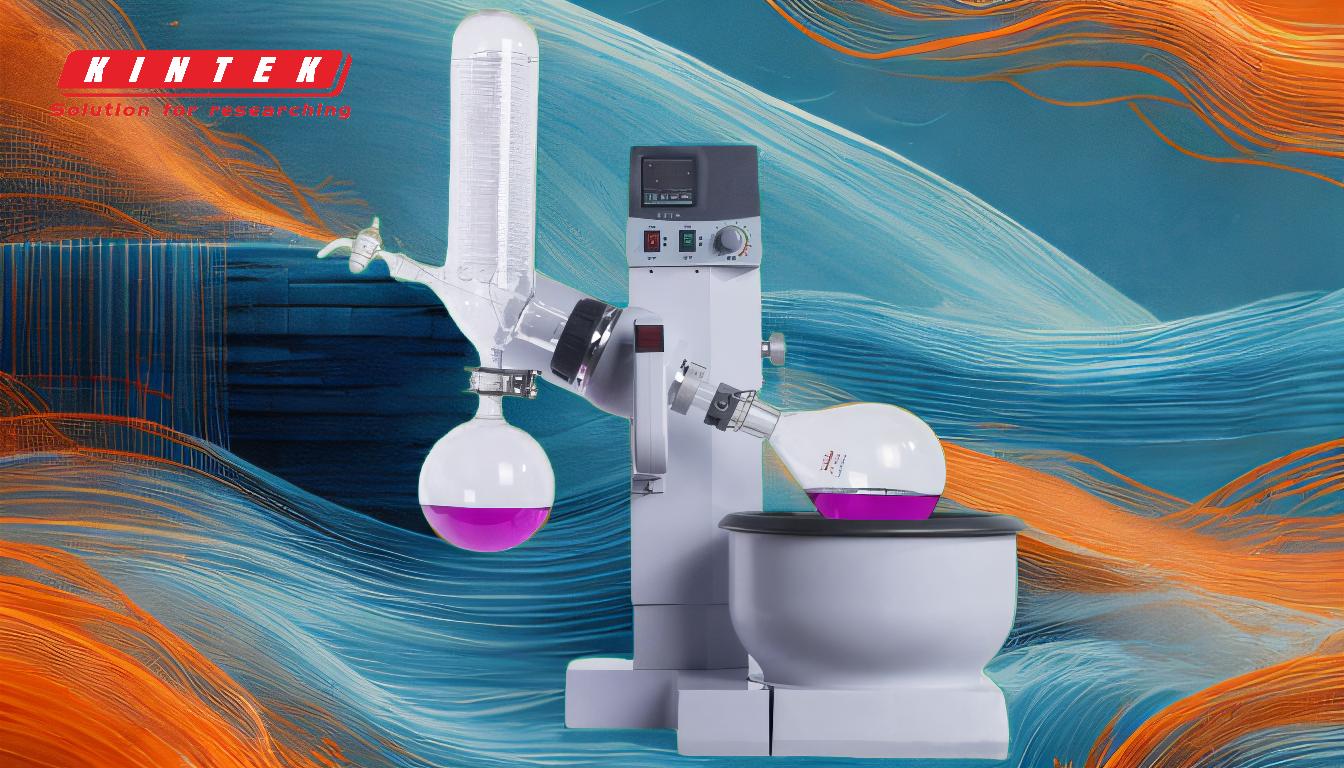A rotary evaporator, often called a "rotovap," is a laboratory device designed for efficient distillation, solvent recovery, and purification of substances. It operates by rotating a flask under reduced pressure, which increases the evaporation surface area and accelerates the process. The system includes a motorized rotation mechanism, a vacuum pump to lower the boiling point of solvents, and a condenser to collect the evaporated substances. This equipment is widely used in industries like pharmaceuticals, chemicals, food, and research laboratories for tasks such as concentration, drying, and recycling of solvents. Its ability to operate at low temperatures preserves the integrity of heat-sensitive compounds.
Key Points Explained:

-
Definition and Purpose of a Rotary Evaporator:
- A rotary evaporator is a laboratory instrument used for distillation, solvent recovery, and purification of substances.
- It is particularly effective for separating solvents from compounds, concentrating solutions, and obtaining purified distillates.
- Common applications include chemical, pharmaceutical, food, and environmental industries, as well as academic and research laboratories.
-
Working Principle:
- The rotary evaporator operates by rotating an evaporation flask under reduced pressure, which increases the evaporation area and speeds up the process.
- The vacuum system lowers the solvent's boiling point, allowing evaporation at lower temperatures to preserve the chemical structure of the solute.
- The evaporated solvent is condensed in a cooling system and collected in a receiving flask, while non-volatile substances remain in the original flask.
-
Key Components:
- Evaporation Flask: A rotating flask where the sample is placed. The rotation creates a thin film of the material on the flask's inner wall, enhancing evaporation.
- Vacuum Pump: Maintains reduced pressure inside the system, lowering the boiling point of the solvent.
- Condenser: Cools the evaporated solvent vapor, converting it back into a liquid for collection.
- Heating Bath: Provides controlled heating to the evaporation flask, ensuring even and efficient evaporation.
- Receiving Flask: Collects the condensed solvent after it passes through the condenser.
-
Advantages of Using a Rotary Evaporator:
- Efficiency: The rotation of the flask and reduced pressure significantly increase evaporation rates.
- Low-Temperature Operation: The vacuum allows solvents to evaporate at lower temperatures, minimizing the risk of degrading heat-sensitive compounds.
- Versatility: Suitable for a wide range of applications, including concentration, drying, and recycling of solvents.
- Scalability: Adaptable to small-scale production units, making it ideal for research and industrial use.
-
Applications Across Industries:
- Chemical Industry: Used for solvent recovery and purification of chemical compounds.
- Pharmaceutical Industry: Essential for drug development, including the concentration of active pharmaceutical ingredients (APIs) and solvent removal.
- Food Industry: Employed in the extraction and concentration of flavors, fragrances, and essential oils.
- Environmental Protection: Used in the analysis and purification of environmental samples.
- Academic and Research Laboratories: Widely utilized for experimental purposes, including synthesis and purification of compounds.
-
Operational Considerations:
- Rotation Speed: The speed of the flask rotation affects the thickness of the liquid film and the efficiency of evaporation.
- Vacuum Level: Proper adjustment of the vacuum pressure is crucial to achieve the desired boiling point reduction.
- Temperature Control: The heating bath must maintain a consistent temperature to ensure uniform evaporation without overheating.
- Safety: Proper handling of flammable solvents and adherence to safety protocols are essential to prevent accidents.
-
Comparison with Other Evaporation Methods:
- Rotary evaporators offer advantages over traditional evaporation methods, such as reduced processing time, lower energy consumption, and the ability to handle heat-sensitive materials.
- Unlike simple distillation, rotary evaporation is more efficient due to the increased surface area and controlled vacuum conditions.
In summary, the rotary evaporator is a versatile and efficient tool for laboratory and industrial applications, enabling precise control over evaporation processes while preserving the integrity of sensitive materials. Its design and functionality make it indispensable in fields requiring solvent recovery, purification, and concentration.
Summary Table:
| Aspect | Details |
|---|---|
| Definition | Laboratory device for distillation, solvent recovery, and purification. |
| Working Principle | Rotates flask under reduced pressure to increase evaporation surface area. |
| Key Components | Evaporation flask, vacuum pump, condenser, heating bath, receiving flask. |
| Advantages | High efficiency, low-temperature operation, versatility, scalability. |
| Applications | Chemical, pharmaceutical, food industries, environmental protection, labs. |
| Operational Tips | Control rotation speed, vacuum level, temperature, and safety protocols. |
Discover how a rotary evaporator can optimize your lab processes—contact us today for expert advice!












